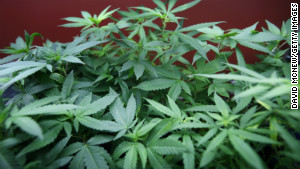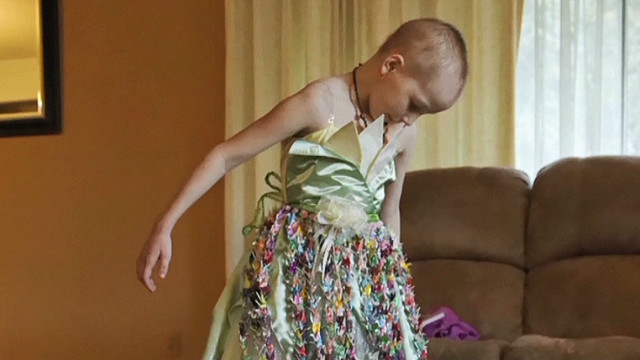STORY HIGHLIGHTS
- Marijuana has shown anti-cancer activity in many early studies
- Experts warn that the effects of the drug on child development are unknown
- Marijuana can be addictive, but addiction rates are often lower than opioids
(TIME.com) -- Like some cancer patients in states where it's allowed, Mykayla Comstock uses cannabis as part of her treatment.
Comstock is 7-years old. Her mother, a long time advocate for medical use of the illegal drug, has been giving her a gram of oral cannabis oil every day. Despite the fact that medical marijuana is legal in Oregon, where Comstock lives, the idea of giving it to a child still gives pause to many adults who associate the drug with recreational use that breaks the law.
As reported by ABC News, Mykayla was diagnosed with acute lymphoblastic leukemia in July. Against her doctor's wishes, her mother, Erin Purchase, began giving her lime-flavored capsules filled with cannabis oil after she had a poor response to her initial chemotherapy treatment.
Her doctors suggested a bone marrow transplant, but while she was taking the medical marijuana, she went into remission in August. She continues to rely on cannabis to ease pain and nausea and her mother plans to continue giving her the drug during the additional two to three years of chemotherapy she still faces.
Purchase believes that certain components in marijuana, which show anti-cancer activity in many early studies, helped spark the remission. Mykayla's current doctor knows she takes the capsules, but doesn't discuss the marijuana as part of her medical therapy.


Experts like Igor Grant of the University of California's Center for Medical Cannabis Research warn that the effects of the drug on child development are unknown. But the same is true for other medications used to fight pain and nausea that are currently given to children with cancer, as well as for powerful antipsychotic drugs that are used in long term treatment of childhood mental illnesses. Opioid drugs like morphine and Oxycontin, which are sometimes used to treat the severe pain that accompanies life-threatening cancer and other diseases, for example, can cause overdoses.
Although marijuana can be addictive, addiction rates are often lower than those to opioid drugs, and discontinuing opioids is associated with severe physical withdrawal symptoms not seen with marijuana. While opioids can cause nausea and vomiting, marijuana reduces the risk of these symptoms that frequently plague cancer patients as side effects of radiation or chemotherapy.
Advocates like Purchase argue that if opioids are acceptable to treat youngsters' cancer pain, then marijuana should be as well.
.png)
The American Academy of Pediatrics, however, disagrees, and opposes the use of marijuana to treat young children, citing its addictive potential and the many unknowns about how it may affect developing bodies. The Institute of Medicine (IOM), a scientific group of experts consulted by Congress, analyzed the available data and since 1999 has acknowledged that certain legitimate medical uses of marijuana are worth additional study.
While the panel noted that many effective treatments already exist to relieve nausea and cancer pain, it recognized that for some patients who may not respond to these therapies, the components in marijuana may be helpful. The group's main objection to the drug was its use in smoked preparations, which is not an issue in this case.
The IOM's report highlights the need for much more research into understanding medicinal uses of marijuana -- including for which symptoms or conditions it might be most effective, and for which patients. Those concerns are magnified when it comes to treating children like Comstock, who often are not included in clinical trials because of their young age, and who may have many more years to contend with any possible side effects of the drug.
Some experts point out that not all of marijuana's components, and their effects on the body, have been studied, not to mention well understood. Without more research, both doctors and parents will continue to face the difficult decision of giving youngsters a compound and hoping it will do more good than harm.
This article was originally published on TIME.com















0 comments:
Post a Comment